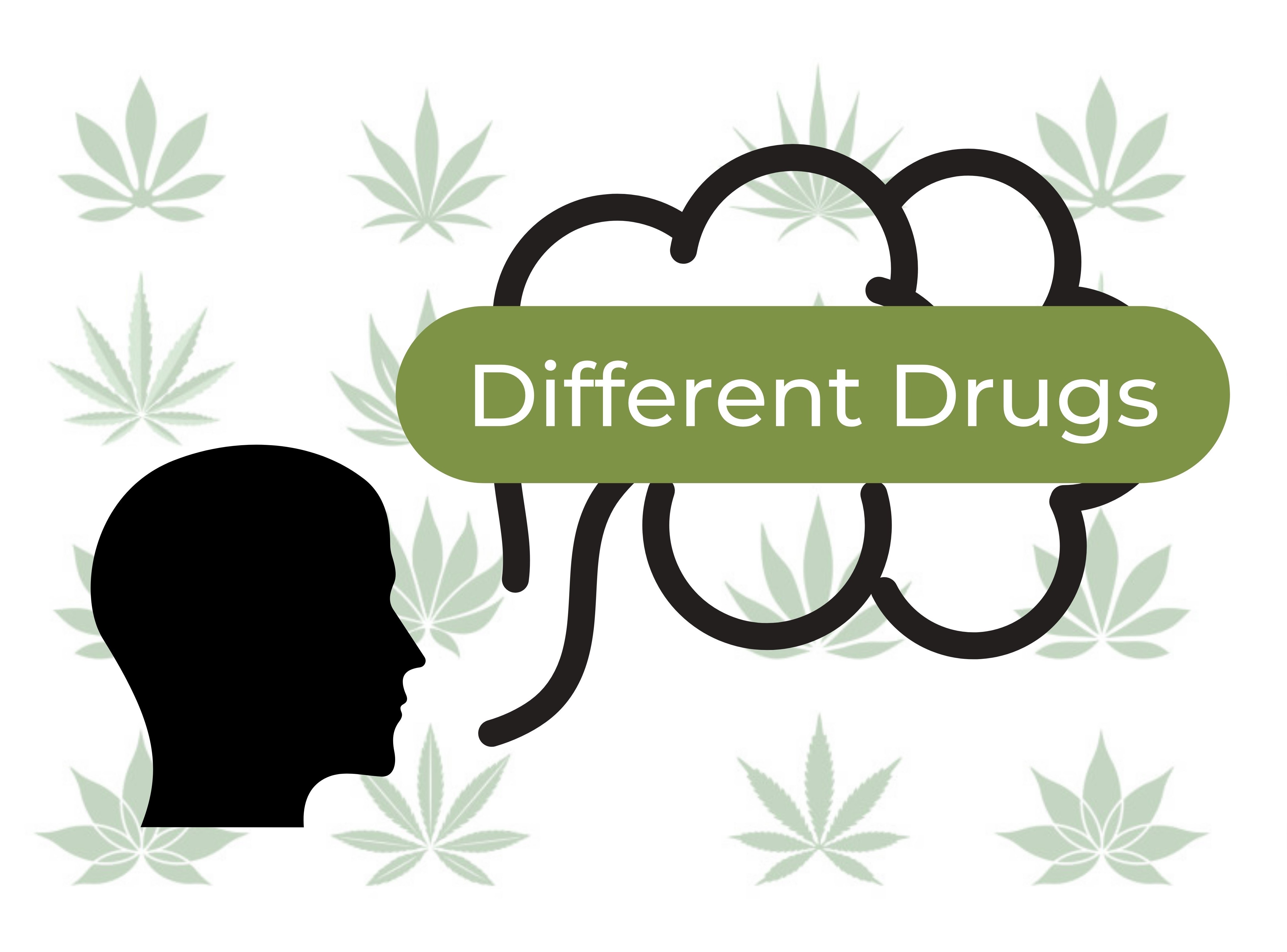Recreational Drugs
For young adults aged 19 to 28, the percentage of illicit drug used has increased from 32% (2006) to 44% (2019). In 2018, 43% of college students reported using marijuana (American Addiction Centers, 2022). Marijuana is one the many commonly used drugs by university students.
With the exception of alcohol and prescribed medications, there is NO safe level of drug use. Many of these are NOT approved by the Food and Drug Administration (FDA), including alcohol, so using any drug always carries a risk.
Types of Drugs
Depressants act on the central nervous system and pump out a chemical that bars brain activity. Eventually, this slows down communication between the brain and the body, reducing your sense of arousal and stimulation.
Common examples:
- Alcohol
- YES! The effects of alcohol classify it as a drug.
- Valium, Xanax, and Klonopin (benzodiazepines)
- Rophynol or the"date rape" drug and liquid ecstasy (GHB)
- Kava
Basic and high doses or overdose effects include:
- Reduced inhibitions
- Enhanced mood
- Reduced anxiety
- Slowed reaction time
- Impaired judgement
- Slowed breathing
- Increased risk of accident or injury
- Impaired judgement and coordination
- Vomiting
- Irregular or shallow breathing
- Blackouts and memory loss
- Unconsciousness
- Coma
- Death
Stimulants increase the level of chemicals that cause alertness, attention, and energy. This speeds up messages between the brain and body making the person feel alert, energetic, or confident.
Common examples:
- Cocaine (coke, snow, blow, stardust)
- Ice or crystal meth (glass, shard)
- Nicotene or cigarettes
- Speed (amphetamines)
Basic and high doses or overdose effects include:
- euphoria
- heightened feelings of wellbeing
- increased heart rate and blood pressure
- increased alertness
- talkativeness
- reduced appetite
- anxiety
- tension
- increased body temperature
- nausea
- tremor
- seizures
- coma
- death
Dependence and tolerance on stimulants is very possible! You may notice caffeine is also a common stimulant, which is regulated by the FDA. While an adult can consume up to 400 milligrams a day, this can have side effects such as headache, insomnia, fast heartbeat, or irritability.
Hallucinogens distort the senses by changing the activities of neurotransmitters (molecules that send signals to the cells) in the brain. Because this distortion occurs by stimulation, suppression, and modulation of the molecules, you can see or hear things that are not there and feel things differently. These can be classified as cannabinoids, psychedelics, or dissociatives.
Examples:
- Cannabis (marijuana, weed, pot, dope, dab, joint)
- Ketamine (Special K or K, kitkat)
- LSD (acid, tabs, dots, Lucy)
- Psilocybin (magic mushrooms or "shrooms", blue meanies, golden tops)
- PCP (angel dust, tranquilizer, ozone)
Basic and high doses or overdose effects include:
- Cannaboids
- euphoria
- feelings of well being
- spontaneous laughter and excitement
- increased appetite
- dry mouth
- quiet and reflective mood
- Psychedelics
- feelings of euphoria
- sense of relaxation and wellbeing
- seeing and hearing things that aren’t there
- confusion and trouble concentrating
- dizziness or clumsiness
- fast or irregular heart beat
- breathing quickly
- vomiting
- sweating and chills
- numbness
- Dissociatives
- euphoria or "floaty" feeling
- happy
- pain-free or numb
- protected
- unconscious
- unaware
- in a ‘hole’
- visual or auditory hallucinations
Regular use of these drugs leads to increased use due to growing tolerance, dependence, and lasting cognitive impairment. They can even cause physical conditions (e.g. ketamine bladder syndrome) or bad trips.
Bad trips can cause frightening and disturbing hallucinations and even long-term affects known as "flashbacks" (re-experiencing the drug days, weeks, months, or years later). Victims of these trips may panic and participate in unpredictable behavior such as running into traffic or attempting suicide.
All of these drugs have nicknames that can be very confusing. CLICK HERE to learn more from the Drug List and Drug Wheel on the Alcohol and Drug Foundation webpage.
Why Would People Do Drugs?
Outside of medical necessity, doing and misusing drugs can start with...
- High levels of stress,
- Social glorification,
- Peer pressure,
- Seeking a thrill,
- Self-medication,
- Grieving after a loss, and even
- Boredom.
Most people who do or have done drugs were not planning on addiction. We give you these facts because addiction is unpredictable.
You can be addicted the first time you try a drug or never become addicted. Some drugs are more addictive than others, and the way your brain works makes symptoms and side effects vary from person to person. The consequences can be short-term, long-term, life-threatening, or fatal.
Avoiding drug use, especially misuse and overdose, is the SAFEST way to not experience these consequences.
![]()
References:
New Life 360 - Why People Start Doing Drugs
Alcohol and Drug Foundation - Lists of Drugs and Facts
Australian Government Department of Health - Types of Drugs
American Addiction Centers - Substance Abuse in College Students
Some of the links on this page may require additional software to view.


